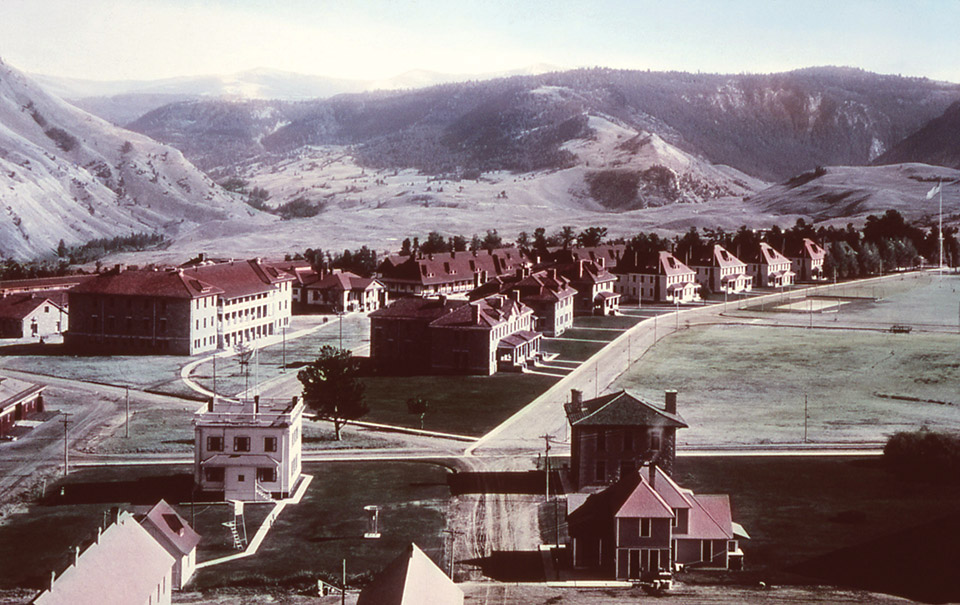For the decade after Yellowstone National Park was established in 1872, the park was under serious threat from those who would exploit, rather than protect, its resources. Poachers killed animals. Souvenir hunters broke large pieces off the geysers and hot springs. Developers set up camps for tourists near hot springs, along with bath and laundry facilities in the hot springs. In response, civilian superintendents were hired to preserve and protect this land. Their experience and intentions varied, and they were all under-funded and under-staffed. Word got back to Congress that the park was in trouble, but legislators refused to appropriate any funds for the park’s administration in 1886.

Yellowstone National Park turned to the U.S. Army for help. In 1886, men from Company M, First United States Cavalry, Fort Custer, Montana Territory came to Yellowstone under the command of Captain Moses Harris. They began what would be 32 years of military presence in the park.
At first, the soldiers lived in temporary frame buildings at Camp Sheridan at the foot of the Mammoth Hot Springs Terraces. After enduring five cold, harsh winters, the Army realized there was no end in sight to this assignment. Therefore, in 1890, Congress appropriated $50,000 for a permanent post.
In 1909, Scottish stonemasons began constructing seven large sandstone buildings using standard military plans in the Colonial Revival style. The buildings represent the Army’s attempt to live up to a substantial commitment and to provide a model post for visitors. The stone for these buildings was obtained from a quarry between the Gardner River and the Mammoth Campground.
Most of the buildings constructed during the Army era are still standing and used by the National Park Service as park headquarters. Many of the interiors have been modernized, while the exteriors have been maintained and/or restored. The map shows how the fort buildings were used in 1916, just before the National Park Service was established and took over the park’s administration.
At present, many buildings in the Fort Yellowstone Historic District are employee residences and are not open to the public. Please respect the privacy of residents by staying on the paved route and treating living areas with courtesy.